Area 51, Cache Of Cold War Secrets?
From the desk of Thomas F. Bertonneau on Sat, 2011-05-28 10:32
As revelations go, journalist Annie Jacobsen’s new book about Area 51 – An Uncensored History of America’s Top Secret Military Base (Little, Brown 2011) delivers rather less éclat than the publicity for it promises. The book is nevertheless a moderately engaging “read,” whose 384 pages of text prompted this aficionado to devour their reportage in a mere two sittings, one before going to bed, until quite late at night, and the other early the next morning on awakening. The disappointment with which Jacobsen’s opus is likely to leave connoisseurs of its genre stems from its aggressive but peculiar myth-busting character.
In at least one case, however, the allegation by which Jacobsen designs to debunk one of the persistent “Area 51” rumors is more fantastic than the rumor itself. This allegation concerns two German aircraft designers of World War Two, Walter and Reimar Horten, whose post bellum activities are not nearly so obscure as Jacobsen seems to think. The capital myth at issue is the much ballyhooed “saucer crash” and recovery of alien corpses at Roswell, New Mexico, in 1947. Otherwise, Jacobsen largely avoids the most outré stories about what currently goes on – and what has gone on – in the vast tract of the Nevada desert north of Las Vegas where the US government and its armed forces have undertaken secret research since the mid-1940s.
Jacobsen supplies some new and vivid details, but her documentation, frequently in the form of tape-recorded interviews, some anonymous, is not always convincing. If the book had an overriding value it would be to confirm the intuition of many people that for sixty years much of what the governments of the western nations have done they have done in furtive concealment, and that frequently the motive for secrecy is that what governments do is immoral and repulsive.
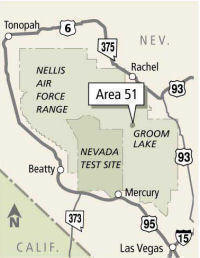
Although Area 51 – which, indeed, the federal government to this day claims not to exist – is linked in the myth to strange things seen in the sky, Jacobsen does a service in reminding her readers that the flight and engineering facilities that provoke so much curiosity lie adjacent to the Nevada Test Site where nearly three thousand nuclear warheads were detonated, both above and below ground, in the period between the early 1950s and the early 1990s. The earliest bomb-test took place in New Mexico in July 1945; after that, testing moved to Bikini Atoll in the South Pacific. The logistics of springing squibs in the balmy lagoons of Melanesia soon became expensive for the client (the US government) and annoying for the scientist-participants, whose transportation by naval convoy from the West Coast to the test-sites required two-weeks one way and two weeks back. By contrast, the Nevada desert lay a mere two hours by plane from Los Alamos. The islands still seemed best for big, new, unpredictable booms, like the first hydrogen bomb (“Mike,” 1952), but for refining already proven designs and testing details, the convenience of the Nevada site was inarguable. When the need arose in the early 1950s to deliver “overhead” espionage technology to the recently constituted CIA, the dehydrated salt-flat at Groom Lake, which would become the center of activity of Area 51, was self-recommending. It already belonged to the federal government; it was remote, tall mountains hiding it from observation on three sides, and it was already robustly policed against accidental or nefarious intrusion.
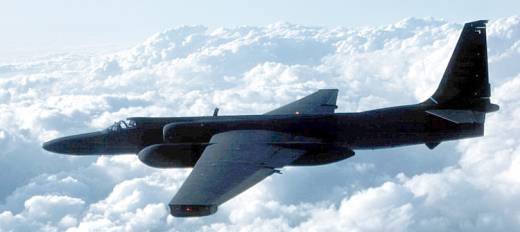
The first quarter or so of Area 51 deals with the development and operational history of the earliest purpose-built “spy plane,” the Lockheed_U-2, designed by that outsized engineering personality Kelly Johnson. The Cold War, as Jacobsen rightly emphasizes, differed markedly from all previous wars, and not only in its avoidance through proxy-conflicts of direct superpower confrontations. The Cold War was also an intelligence- and a propaganda-war, secrecy being correlated with both intelligence and propaganda. The US government knew that its arch-enemy, the Soviet Union, had culled its share of German scientists at the end of World War Two and that those scientists would likely be doing for the USSR what America’s ex-Nazis were doing for it. Whereas Soviet spies in the West were numerous and effective, American spies behind the Iron Curtain were few and not nearly so effective. Suspicions that the USSR might be pulling ahead of its rival in bomb-refinement and delivery systems became acute when the Russians exploded a hydrogen warhead within months of the US having done so. The need for aerial surveillance of the Soviet Union now reached its own pitch of acuity, pictures being worth thousands of words. Hostile air defenses made existing aircraft vulnerable. General of the Strategic Air Command, cigar-chomping Curtis LeMay, sent B-47 jet bombers on reconnaissance missions over Russia, some of which the Soviet Air Force shot down. Johnson conceived a brilliantly simple idea. In the U-2, he proposed a powered glider, capable of flying at extreme high altitudes in excess of sixty thousand feet. Fully fueled, the U-2 remained aloft for twenty hours, snapping pictures that proverbially could detect the license-plate numbers on Kremlin limousines.
Jacobsen might make too much of the U-2, however, which, while it performed its job marvelously for a time, qualified as less than a super-airplane. The U-2 flew high, but in the low-subsonic speed envelope, and its frail construction limited its maneuverability. The pilots come across as more impressive than their machines, having had to endure the cramped cockpit for many hours, zipped inside a pressure suit, without even a spigot for a drink of water. Like other writers eager to puncture the balloon of “Area 51” lore, Jacobsen attributes the rash of UFO-sightings in the mid-1950s to the U-2. One need hardly accept extravagant notions about what unidentified flying objects really are to remark that the straight-flying, relatively slow-moving Lockheed machine, operating in its test phase exclusively out of Groom Lake at night, could hardly have been the source of a nationwide rumor of weird discoid entities zipping through the sky. Had anyone caught a glimpse of the U-2 (I used to see them on take-off when I lived under the traffic pattern of Van Nuys Airport in the San Fernando Valley in the mid-1960s), he would have recognized a standard aerodynamic form, with a straight, somewhat elongated wing and a pinched fuselage resembling that of Johnson’s F-104 Starfighter. In 1956, no one except those with “need to know” caught glimpses of the U-2, which in any case reached altitude so swiftly and flew at such height as to be unobservable.
The point is an important one because Jacobsen assumes the UFO-myth to have been, not a mere incidental, but rather a deliberately fostered artifact of the Cold War, at first pooh-poohed by petulant Air Force officials but later encouraged by them as tactically useful. For the Air Force, the UFO-myth functioned as a wacky conviction among a segment of the population that contributed by distraction to keeping black operations secret.
Keeping secrets is a major theme of Area 51. Here again, Jacobsen makes an argument worth heeding. That “nothing can be kept a secret” is a common assertion, a cliché, but the CIA kept the U-2 secret until the embarrassment occurred of Francis Gary Powers being shot down over the Soviet Union in 1960. That incident turned a clandestine intelligence mission into gold-plated propaganda scrip for Nikita Khrushchev, who promptly cashed it in. Until the Powers shoot-down, the U-2 remained hidden. Jacobsen points out that when Harry Truman became president on the death of Franklin Roosevelt in 1944, he knew nothing about the Manhattan Project or the atomic bomb. Some black operations – many centered at Area 51 – are so “need to know” in status that even presidents stand outside the horizon of cognizance. Thus the CIA prevented President Clinton from making public certain documents related to living-subject, radiation-exposure research undertaken in Nevada in the 1950s. The spy agency bluntly refused to release the requested data to the Commander in Chief, as Jacobsen reminds readers. Clinton could do nothing about it. The follow-on to the U-2, the hypersonic aircraft known as the A-11 or A-12 “Oxcart,” and in a refined version as the SR-71 “Blackbird,” also remained in secrecy for a long time. While “nothing can be kept secret” is a cliché, “things can be kept secret for a long time” is closer to a general truth.
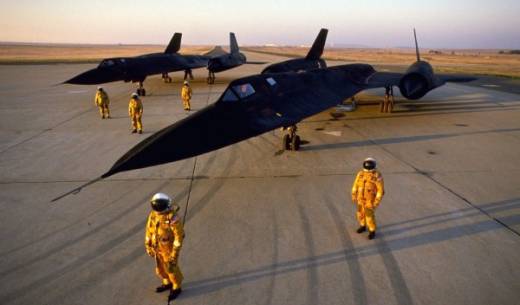
The Atomic Energy Commission, nowadays the Department of Energy, pursued research on nuclear rocket-propulsion near Groom Lake at the same time when test pilots were learning how to fly the A-12, many details of which remained suppressed until Jacobsen included them in her exposé. One incident involved the deliberate abuse of the NERVA rocket engine by running it until it exhausted its coolant and exploded, showering the desert around the static test stand with intensely radioactive debris so “hot” that observers in a shielded control tunnel in an adjacent mountainside could only exit through a field of near-lethal radiation. The AEC also exploded a “dirty bomb” on the “proving ground” where it bordered Area 51, contaminating the desert with deadly isotopes that no agency made any attempt to remove for thirty years. It turns out, incidentally, that earthworms can spread Plutonium pollution. The worms ingest the fallout; birds eat the worms; the birds then fly away and defecate, whereupon other worms ingest the feces and the cancer-producing substances spread ever further beyond their point of origin. On the other hand, as long as one does not breathe Plutonium, it is innocuous; it can be held in the hand harmlessly. Only in the blood-interface of the lungs does the substance have the opportunity to contaminate and begin to kill the body.
NASA would have tested the prodigal Orion spaceship at Area 51, had its gross, non-concealable incompatibility with the Partial Test Ban Treaty of 1963 not doomed the project. Orion began in concept as a skyscraper-scaled manned rocket for exploring the solar system, especially for getting to Mars fast. Orion would have propelled itself by machine-gun-like staccato atomic explosions, detonated beneath a vast discoid “bumper” at the base of its fuselage. Working small models showed the validity of the idea, which would probably have succeeded. Success, however, would have entailed exploding hundreds of low-yield nuclear devices in the span of two or three minutes, as required to accelerate the mobster-vehicle to escape velocity. After NASA lost interest, the Air Force briefly entertained the idea, conceiving it anew as an orbital battleship for bombarding Russia or China from space. Orion remains a fantastic might-have-been, indicative of the extravagant notions that the Cold War engendered and in some cases actually pursued.
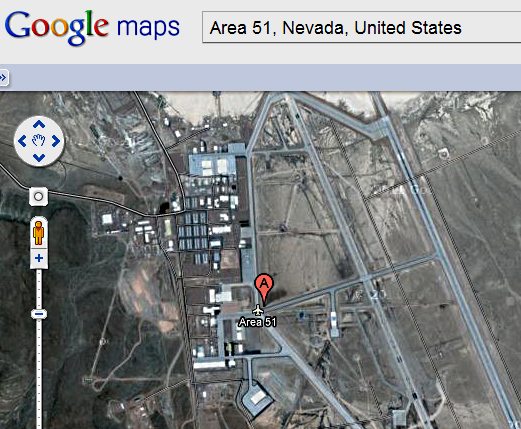
Jacobsen’s “Area 51” discourse differs noticeably from tabloid discourse on the same topic. In Jacobsen’s book readers will find no flying saucers from outer space, no “Alien Grays,” and no back-engineered extra-terrestrial technology. Back engineering happened at Area 51, but it involved MIG jet fighters, not Martian or interstellar hardware. In her first chapter, Jacobsen indeed examines the key person of so much 1990s “Area 51” speculation, the dubious self-publicist named Robert “Bob” Lazar, who, on Las Vegas television in an interview in the late 1980s, claimed to have worked at Groom Lake on back engineering the propulsion system of a flying saucer. Lazar also claimed to be an MIT graduate, a purported fact, which no records can corroborate; he has turned out to have a criminal history (pandering) and to be a strikingly less-than-credible source. Even UFO-as-alien-spacecraft proponent Stanton Friedman, whose credulity is – how to put it – liberal finds Lazar completely untrustworthy. Jacobsen nevertheless finds one detail of Lazar’s complicated story tantalizing. This detail concerns the notion that the UFO-phenomenon grew out of deliberate governmental manipulation, both at home, to cover secret projects, and as a hostile activity conducted by the USSR to destabilize the domestic situation in the USA.
Lazar claimed to have observed at Groom Lake on one occasion a diminutive, humanoid creature being interviewed in a room by a government official. In standard “Area 51” lore, this would figure as anecdotal evidence in confirmation of the story – first bruited by Charles Berlitz in his book on The Roswell Incident – that the Air Force recovered in New Mexico sixty-four years ago not only a crashed saucer, but also the bodies of alien astronauts. It is at this point that Jacobsen’s explanation of the Roswell events becomes as incredible as the Berlitz-version although there are precedents for Jacobsen’s story in the television program The X-Files. Readers should take warning that, in what follows, there are “spoilers,” and that people looking forward to tackling Jacobsen’s book on their own should perhaps skip the next three paragraphs.
According to Jacobsen, something unprecedented and unique really did happen at Roswell in 1947. Furthermore, Jacobsen accepts the lore that the first Air-Force bulletin concerning the event, to the effect that Air Force personnel had salvaged a crashed saucer, was true and that the second bulletin, allegedly correcting the first and asserting that the saucer was in fact a deflated weather balloon, was a lie. But insofar as she accepts that, why does she not buy into the rich alien-contact rumor? The Horten brothers, Walter and Reimar now re-enter the narrative. During World War Two, the fraternal design team had projected and built for the Luftwaffe several advanced aircraft constructed along “flying wing” parameters and incorporating turbojet propulsion. A “flying wing” fighter-bomber, known as the Horten (or Gotha) 229, achieved prototype status in 1945 and actually flew. In any case, the US Army brought at least one partially completed Ho-229 back to the States in 1945; it would have ended up at Wright Paterson Field in Dayton, Ohio; today it resides in the Smithsonian Air and Space Museum. Yet, in the sweep-up of German scientists and engineers after the collapse of the Reich, the Horten brothers went missing.
Jacobsen surmises that the Horten brothers disappeared for several years into Russia, as part of the parallel Soviet sweep-up of technically valuable personnel. There seems to be some evidence for the supposition. In a piece of verbal legerdemain, however, Jacobsen attributes to the Horten brothers not only the scheming and building of “flying wing” aircraft, but also, both in Germany at the end of the war and then in Russia, of “flying disc” aircraft. The “flying disc” supposedly had two characteristics that put it in the forefront of aviation. It was radar-proof, or at any rate reflected only a small “radar cross-section,” and it had “hover capability.” Jacobsen intimates, but she never specifies, that the propulsion system was unorthodox, neither the turbojets of the H-229 nor any other conventional power plant. Anyone who knows the popular version of the “Area 51” legend will immediately associate Jacobsen’s claim, which has further ramifications, with the science-fiction-like story that has emerged in recent years of a secret German device called “The Bell” and of “Nazi UFOS” that used “The Bell” as a power plant. Jacobsen never mentions “The Bell,” but one has the impression that she tacitly expects her readers to forge the link between her Horten-brothers “flying disc” story and that unmentioned-by-her rumor of a Nazi anti-gravity motor.
In Jacobsen’s account, the Horten brothers not only built a radar-proof “flying disc” for the Russians, which could attain fantastic speed and hover, but Stalin employed this machine in an extremely provocative operation against the USA. Stalin and his advisors knew, Jacobsen writes, of the controversial 1938 Orson Welles radio broadcast based on The War of the Worlds by H. G. Wells, an early story of hostile aliens invading the earth. The account of the panic that the Mercury Theater presentation caused has exaggerated itself over time although a few listeners did take fright. Jacobsen seems to accept the exaggeration. The Horten brothers’ research now gets mixed up with the criminal medical experiments of Dr. Josef Mengele, who also, in Jacobsen’s narrative, worked with the Russians. The Russians trained children, whom Mengele had surgically altered to appear non-human, to operate the “flying disc.” They sent the “flying disc” on a mission to penetrate the air space of the Roswell base, home in 1947 to the world’s only nuclear-capable bomber squadron, with the plan deliberately to crash. On recovery, the aircraft and its dead occupants were supposed to be mistaken for the vanguard of an alien attack, setting off social panic in the USA. In Jacobsen’s telling, the American military indeed recovered the mystery aircraft, issuing it at first to Wright Paterson Field and later transferring it to Groom Lake. It hushed the news because it too believed that an announcement of alien intrusion would provoke nationwide hysteria.
Actual alien spaceships would make as much sense. To believe Jacobsen’s account one must accept the existence of an anomalous power plant for aircraft of which there has never been any trace; one must accept Russian willingness to put this anti-gravity motor in the possession of rivals; and one must accept that the “Alien Grays” of UFO-lore are actually victims of Dr. Mengele’s death-camp Frankenstein clinic. “Flying disc” aircraft existed. Chance-Vought built one for the US Navy in 1946; Avro Canada built one for the US Air Force in the 1950s. The Navy had so little confidence in the Chance-Vought disc that it never permitted either of the two prototypes to take to the air. The Avro disc, which was supposed to fill the role of a supersonic air-superiority fighter, never rose higher into the air than a few feet and never flew faster than forty miles an hour. The Horten brothers might have schemed a crescent-shaped jet-propelled aircraft either for the Reich or for the Russians, but it appears in no reputable publication except as a sketchy proposal. The earliest post-war UFO-sighting, Kenneth Arnold’s while flying over the Cascade Mountains in Washington State, was of crescent-shaped machines, not discs, but Jacobsen makes no mention of this.
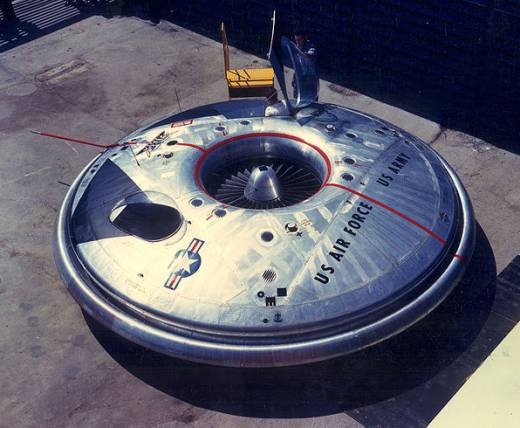
For all her skepticism, Jacobsen seems quite gullible. The alternatives she offers, for what she implies to be implausible stories, are equally implausible. If Stalin had long-range, radar-transparent, supersonic, hover-capable war birds in 1947, why would he not have used a fleet of them to conquer Western Europe and the USA? If Stalin’s disc used the fabled “Bell,” which was allegedly a German invention, why would the Germans themselves not have used it, launching a fleet of Über-Messerschmitts to shoot their enemies out of the sky? If the Americans recovered this miracle-engine at Roswell in 1947, could they not, in the subsequent sixty-four years, have back engineered it? And if they did back engineer it, and if it performed as Jacobsen reports, why would they have bothered to build vast expensive armadas of conventionally powered fighters and bombers? I would just as soon accept that Martians crashed in New Mexico those sixty-four years ago. What then is the value of Jacobsen’s Area 51?
Its value, I believe, is in the book’s oblique attestation that the regime of ideology and technology has shattered the basis of the ordinary man’s epistemological certainty. In other words, only a robust skepticism is appropriate for the reception of official claims about the nature of political reality; nothing that is not directly and vitally ascertainable or commonsensical should be casually trusted. People can know what is going on in small-scale civic circumstances, but as one proceeds up the ladder of political largeness, all centrally emitted discourse becomes dubious, whether it is Barack Obama’s latest birth certificate or Al Gore’s Cassandra-prophecy of imminent world-catastrophe due to anthropogenic environmental warming. Did American astronauts land on the moon? This is probable because the story that they did not, but that NASA faked the films in a studio at Groom Lake, flouts the principle of Occam’s Razor. On the other hand, that the US government violated the Partial Test Ban Treaty or that it, too, like the USSR, made use of perverse Nazi physiological data, is not impossible. It is altogether too likely. God knows what secret enormities the Soviet Union perpetrated, beyond its criminal acts that are already documented.
One should distrust official pronouncements because one of the few certainties in the modern – or postmodern – milieu is that governments pursue immoral projects and move inveterately to obfuscate their shameful turpitude. The larger and more centralized the government the less investment it has in its own transparency; the more likely it is to lie about everything to its citizenry. Governments also co-opt third parties to help in the spread of disinformation. Jacobsen’s Area 51 is not excluded from this principle.

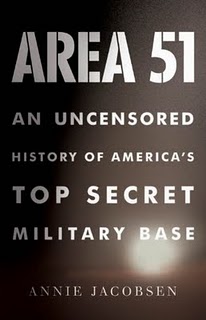
Squibs and Conspiracies?
Submitted by mpresley on Sun, 2011-05-29 01:01.
Springing squibs?
Next, men like Kelly Johnson and Jack Northrop were boyhood heroes to a generation now on the way out. Who are the heroes today? Rock and roll stars? It is remarkable what these designers could accomplish given both their time constraints and the tools they had to work with. It is doubtful that our current procurement bureaucracy would allow their feats to ever be duplicated.
Secrets are relative. An overflight project like the U-2, or SR-71, can be held back from the general public, however the presence of these machines are hardly a deep secret. Those who work the projects know, and those for whom they were built (the Russians) knew, albeit perhaps not the details. With the SR, it is said that Lyndon Johnson spilled the beans for his own strictly partisan political purposes.
Finally, the idea of flying saucers in the usual sense of the imagination, is simply imagination. If space aliens existed they would have been found by now, and given the fact that everyone and their brother has a cell phone camera, the dearth of evidence is telling. I personally wouldn't mind going up in one, but if the aliens are going to break out the a-probe (as they've been known to do), I think I'll have to take a pass.
As far as government conspiracies go, in a time when the President of the United States, ostensibly the most powerful man in the world, can't get a hummer from a bimbo in a White House closet without the world knowing about it, how can anything be really secret, anymore? Better to be worried about what goes on in front of our eyes than to be overly concerned about what is supposedly hidden from view.